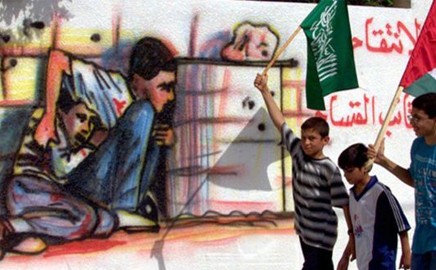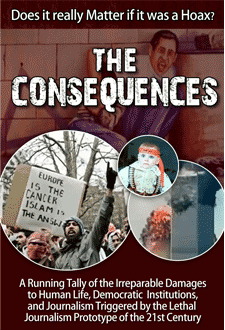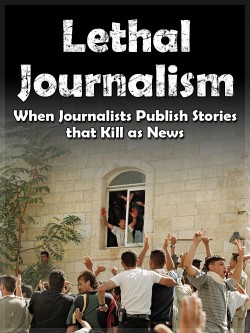The Al Durah Project
The image of Mohammed Al Durah has been ruthlessly exploited as an indictment of Israel and its defense forces and an incitement to war against Israel since its first public display in September 2000.
The images and their accompanying narrative inspired a horrifying wave if terror attacks to widespread approval among believers, bringing about the deaths by murder of thousands of innocent Israelis, throttled Palestinian civil society, and gave dominance to a school of journalism that systematically disseminated Palestinian lethal narratives as news. This war-dynamic that develops around this brand of toxic journalism continues to operate, and will do so as long as it does not undergo scrutiny and serious critique.
The dissemination of the Al Durah imagery and its elevation to icon status was made possible only because prominent and respected journalists and their editors presented the footage as the killing of a Palestinian boy in the lap of his father as “news” (i.e., a fact), and then concealed, suppressed or ignored the many questions that ought to have been asked from the outset.
Both the chief reporter and the management at the French public national television channel France2 – one of Western Europe’s most important and influential news media – indicated in subsequent remarks* that they knew which questions to ask and chose not to. And when challenged with the quality of the journalism, the reporter responded: “That’s how I do a story. What’s your problem with that?”
We ask: Why?
The continuing absence of journalistic curiosity about the Al Durah video clip would have been striking if only because of its terrible consequences. It becomes all the more disturbing in the context of a campaign, waged since 2004 by France2, to use the French courts to suppress questions that their actions raised. The Al Durah story as disseminated and believed constitutes the most successful and long-lasting hoax in post-war journalism.
The Al Durah affair symbolizes the active collaboration by of one of democracy’s foremost institutions – the free media – in the propagation of lethal narratives about a democracy and in the service of one of a quasi-totalitarian society that brainwashes its own people with hate. It embodies the failure of an open society to grapple with obvious efforts to subvert and manipulate its news and public opinion.
The lessons to be learned from the Al Durah affair have application far beyond the Arab-Israeli conflict. They concern the nature of civil society and its ability to deal with hostile forces that seek to destroy human comity and propagate hatred.
We at the Al Durah Project believe that the forces of civil society can still address fundamental questions raised by the damage the wide circulation of lethal narratives does to the very fabric of global civil society. And the best way to begin is to start with the most extraordinary and revealing case of lethal journalism in modern times: the Al Durah Incident.




